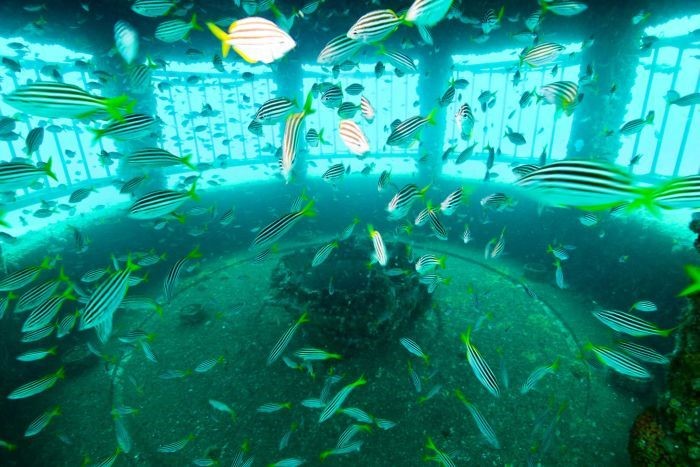A study into Sydney’s desalination plant has found it is not toxic to marine life, handy, as the drought means it will soon have to be switched on.
As part of the desalination process, “hypersaline” water is returned to the ocean. A University of New South Wales study conducted off the coast of Kurnell in Sydney’s south has found that this pumping has little impact on the surrounding ecosystem. At least when the plant was last operated in 2012.
The study examined six underwater locations, 25 metres below the surface and found that hypersaline water is dispersing and diluting very quickly.” The main changes were caused to invertebrate life, swept away by the increased flow from the diffusers. Polychaetes (worms), bryozoans and sponges reduced in cover as far as 100 m from the outfall. “Species of marine invertebrates that were slow swimmers were reduced in abundance,” Professor Johnson explained. Barnacles loved the extra flow.
Professor Johnston said about 1 per cent of the global population relies on desalination, but that figure is expected to rise rapidly. “Certainly around Australia, we’ve seen a proliferation of desalination plants around all of the states almost,” she said. “That’s a global trend, and it’s one that going to continue as increasingly frequent and severe climate and population driven water shortages impact on the availability of fresh water.” The costs of running it are also astronomical as is its carbon footprint, at least until we switch electricity to renewables (it “gets power from a local wind farm” but that’s a bit coy as it all comes from an integrated grid).
The Adelaide desal plant cost $1.8 billion and only produced about 4% of Adelaide’s needs. In 2014, it was reported that the Sydney desalination plant was costing the taxpayers $534,246 per day as the plant sat idle. So even if they don’t hurt marine life, use them only in emergencies. It is one of the hidden costs of getting climate policy wrong in the first place.
 Photo: invertebrates, like sponges, were reduced. (UNSW)
Photo: invertebrates, like sponges, were reduced. (UNSW)
 Photo: The change to water current has not been a problem for fast-swimming marine animals. ( UNSW)
Photo: The change to water current has not been a problem for fast-swimming marine animals. ( UNSW)
